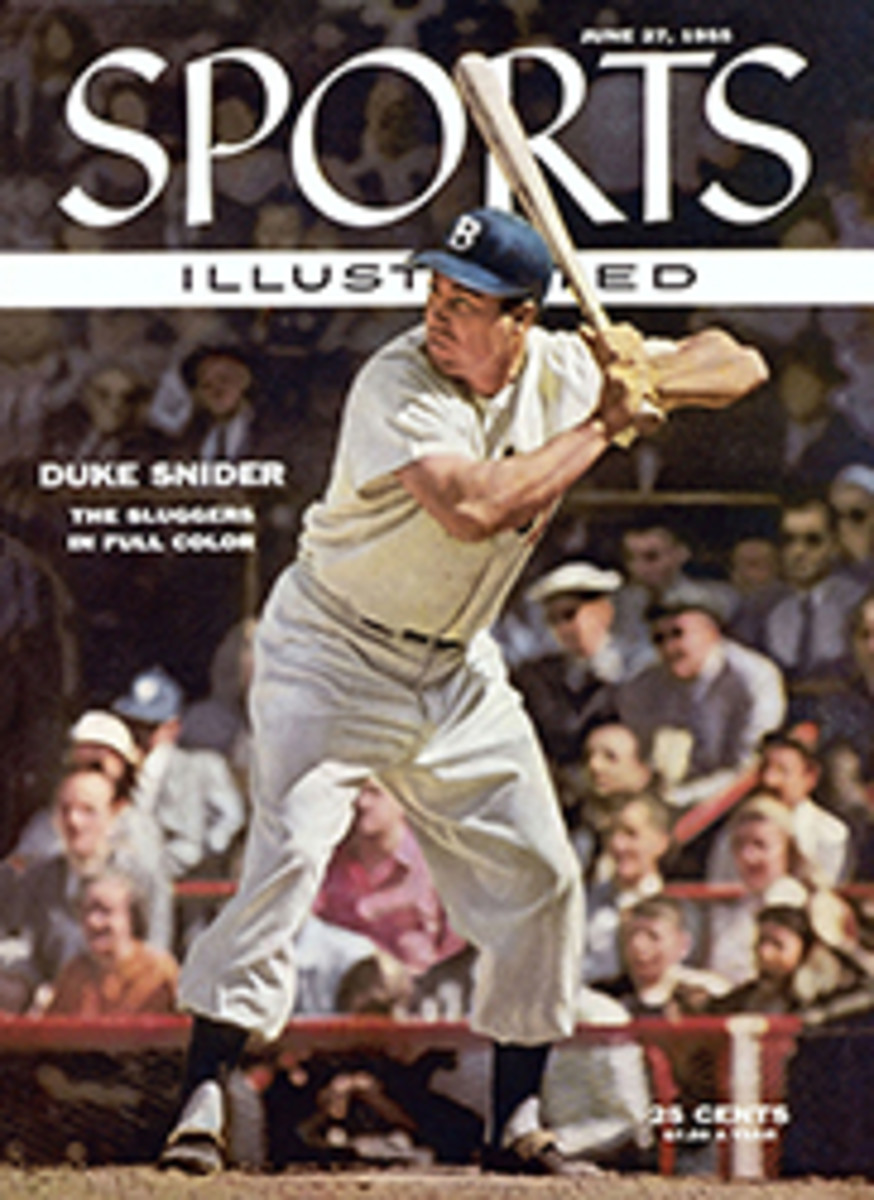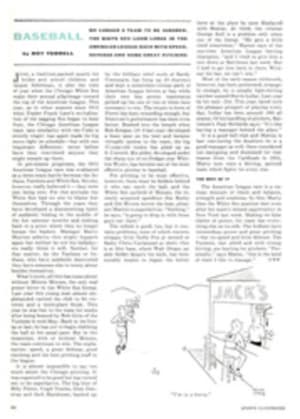
NO LONGER A TEAM TO BE IGNORED, THE WHITE SOX LOOM LARGE IN THE AMERICAN LEAGUE RACE WITH SPEED, DEFENSE AND SOME GREAT PITCHING
June, a tradition-packed month for brides and school children and tarpon fisherman, is also the time of year when the Chicago White Sox make their annual pilgrimage toward the top of the American League. This year, as in other seasons since 1951 when Trader Frank Lane's revitalization of the sagging Sox began to bear fruit, the Chicago American League team (any similarity with the Cubs is strictly tragic) has again made its big move right on schedule—but with one important difference: never before have they convinced anyone they might remain up there.
In pre-season prognoses, the 1955 American League race was evaluated as a three-team battle between the Indians, Yankees and White Sox. No one, however, really believed it—they were just being nice. For this attitude the White Sox had no one to blame but themselves. Through the years they have developed a disconcerting habit of suddenly folding in the middle of the hot summer months and sinking back to a point where they no longer harass the leaders. Manager Marty Marion admits this might happen again but neither he nor his ballplayers really think it will. Neither, for that matter, do the Yankees or Indians, who have suddenly discovered they have someone else to worry about besides themselves.
What's more, all this has come about without Minnie Minoso, the only real power hitter in the White Sox lineup. Last year this young man almost singlehanded carried the club to 94 victories and a third-place finish. This year he was lost to the team for weeks after being beaned by Bob Grim of the Yankees in mid-May. Back in the lineup at last, he has yet to begin clubbing the ball at his usual pace. But in the meantime, with or without Minoso, the team continues to win. The explanation: speed, a great defense, good catching and the best pitching staff in the league.
It is almost impossible to say too much about the Chicago pitching. It was expected to be good but has turned out to be superlative. The big four of Billy Pierce, Virgil Trucks, Dick Donovan and Jack Harshman, backed up by the brilliant relief work of Sandy Consuegra, has hung up 10 shutouts and kept a sometimes-vicious pack of American League hitters at bay while their own less potent teammates picked up the one or two or three runs necessary to win. The return to form of Pierce has been rewarding enough, but Donovan's performance has been even better. Rushed into the breach when Bob Keegan (16-9 last year) developed a bone spur on his heel and became virtually useless to the team, the big 27-year-old rookie has piled up an 8-2 record. His slider, developed under the sharp eye of ex-Dodger star Whitlow Wyatt, has become one of the most effective pitches in baseball.
For pitching to be most effective, however, there must be fielders behind it who can catch the ball, and the White Sox outfield of Minoso, the recently acquired speedster Jim Busby and Jim Rivera moves the lean, pleasant Marion to superlatives. "Nothing," he says, "is going to drop in with those guys out there."
The infield is good, too, but it contains problems, none of which concern scrappy little Nellie Fox at second or flashy Chico Carrasquel at short. One is at first base, where Walt Dropo, an able fielder despite his bulk, has been notably unable to regain the heroic form at the plate he once displayed with Boston. At third, the veteran George Kell is a problem only when out of the lineup. "He gets a little tired sometimes," Marion says of the one-time American League batting champion, "and I tried to give him a rest down at Baltimore last week. But I had to get him back in there. Without his bat, we can't win."
Most of the early-season stickwork, however, has been performed, strangely enough, by a usually light-hitting catcher named Sherm Lollar. Last year he hit only .244. This year, faced with the pleasant prospect of playing every day, Lollar has been around .300 all season. Of his handling of pitchers, Baltimore's Paul Richards says: "It's like having a manager behind the plate."
It is a good ball club and Marion is fast convincing the doubters he is a good manager as well. Once considered too easygoing and dismissed for that reason from the Cardinals in 1951, Marty now runs a driving, spirited team which fights for every run.
THE BEST OF IT
The American League race is a curious mixture of check and balance, strength and weakness. In this, Marty likes the White Sox position best even after his team's missed opportunity in New York last week. Making no false claims of power, his team has everything else on its side. The Indians have tremendous power and great pitching—but no speed and little defense. The Yankees, fast afield and with strong hitting, are hurting for pitchers. "Personally," says Maron, "this is the kind of team I like to manage."
ILLUSTRATION
"I'm in a hurry."

